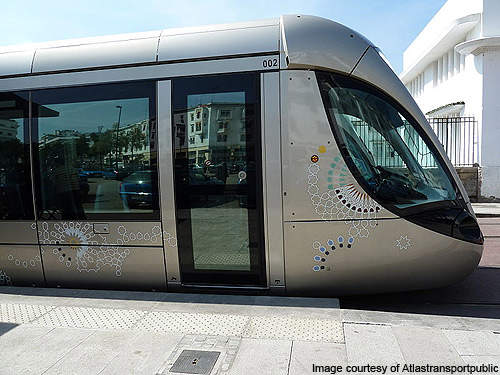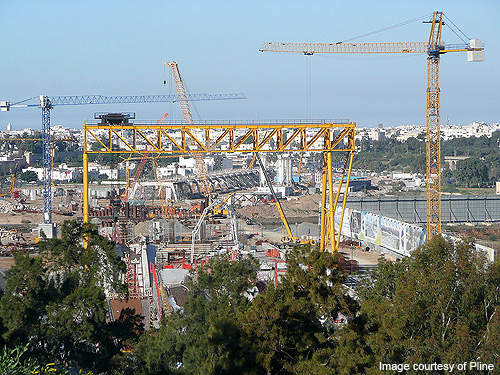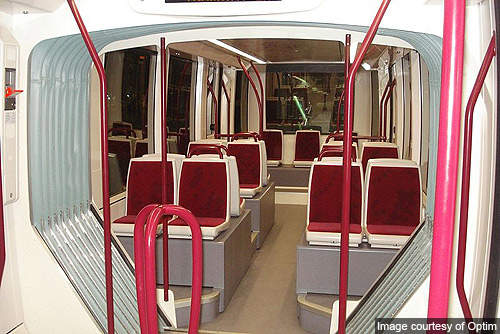The tramway service between Rabat and Salé cities in Morocco was opened on 23 May 2011. The total length of the dual-line tramway network is 19.5km.
The mass transit system is expected to bring many economic and social benefits to Morocco. It is operated by Veolia Transdev.
The tramway meets the daily transport requirements of more than 400,000 inhabitants in Rabat and Salé cities.
The average daily ridership on the tramway service is expected to be 180,000 a day.
Rabat-Salé tramway project
Many studies were conducted to assess the feasibility of building a tramway between Rabat and Salé cities.
The design studies conducted in 2005 and 2006 mandated the Bouregreg valley development agency to deliver the project in collaboration with the municipalities of Rabat and Salé.
The 4.7 billion Moroccan Dirham (MAD) project was initiated in February 2007 by his majesty King Mohammed VI. The first phase was commissioned in May 2011.
The project involved construction of two lines which span 19.5km and with 31 stations. The two lines of the tramway cost MAD3.5bn for construction.
The project required the construction of the Hassan II bridge that connects Rabat and Salé cities. The cost of the bridge was MAD1.2bn.
Line routes on the Moroccan network
Line one connects Hay Karima in Salé with District of Agdal in Rabat. Line two connects densely populated areas such as Ocean, Yacoub Al Mansour district and Bettana in Salé.
Infrastructure of the mass transit system
The tramway consists of 31 stations which are spaced a half kilometre apart and 60m in length. The station platforms include a metal shelter. Traditional Moroccan style was followed in designing the stations and platforms.
In March 2007, construction of underground networks was initiated. The construction continued for three years in Salé and Rabat cities, involving the installation of platforms and other equipments for the movement of trams.
In 2008, concrete was poured on the track surroundings. In 2009, construction of 17 substations, including two underground substations, overhead lines and a maintenance centre in Salé was completed.
Construction of Hassan II bridge was also initiated in 2009. It was completed in May 2011. In 2010, all the 31 stations and the two lines were completed and the rolling stock was tested.
The Hassan II bridge was constructed 14m above the water level on the Bouregreg river. The bridge was designed by Marc Mimram. The bridge includes a tramway platform, cycle tracks, three car lanes in each direction and two walkways. It was constructed with 10m headroom and at a height of 12.8m. It is 46m wide and 1,215m long.
Contractors involved
Transdev Veolia was awarded a six-year contract worth MAD792m to operate the Rabat and Salé tramway.
In 2010, ACS was commissioned by Veolia and STRS to supply the ticketing system for Rabat and Salé tramway network.
In July 2010, Grand Lyon was contracted to provide technical assistance to the tramway for three years.
Rolling stock
In May 2008, Alstom signed a €90m agreement with STRS to supply 22 pairs of Citadis trams to be operated in the two-line network between Rabat and Salé.
In March 2010, the first Citadis low-floor tram was tested on a 2km track in Hay Karima district in Salé.
By May 2011, Alstom delivered all the 44 Citadis trams. The trams were designed specifically to suit the requirements suggested by STRS. The length of each double-tramset is 64m, with 12 side doors.
The low floor level of the trams coincides with the platform level, providing easy access for disabled people.
The trams have 118 seats and can carry 400 to 600 passengers during rush hours.
The trams in line one are operated at 15 to 17 minutes frequency. The trams in line two are operated at 30 minutes frequency. The average speed on the line is 20km/h and maximum speed is 70km/h.
Financing the tramway project
The total cost of the tramway project was MAD4.7bn ($600m). The project was financed by STRS (MAD690m), Agency for the Development of the Bouregreg Valley (AAVB, MAD1.25bn) and the European Investment Bank (EIB, MAD1.88bn).
Future
Line one will be extended to Avenue des FAR and line two to the Higher Institute for Scientific Research by 2013. Two more lines will be added in future. Line three will cover Akkrach, Gare Rabat and Ville stations. Line four will cover stations between Sala El Jadida and Medina of Rabat.




